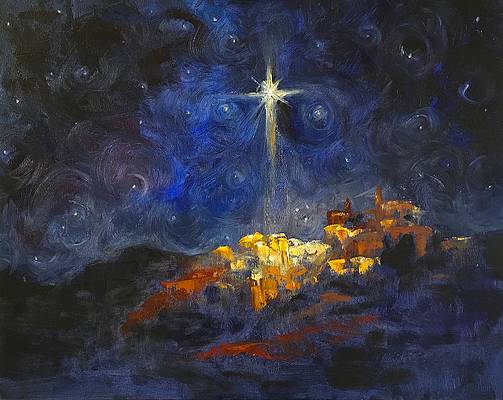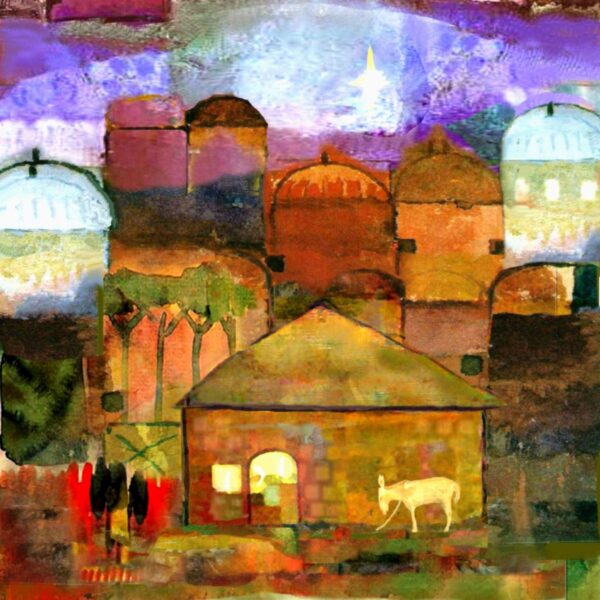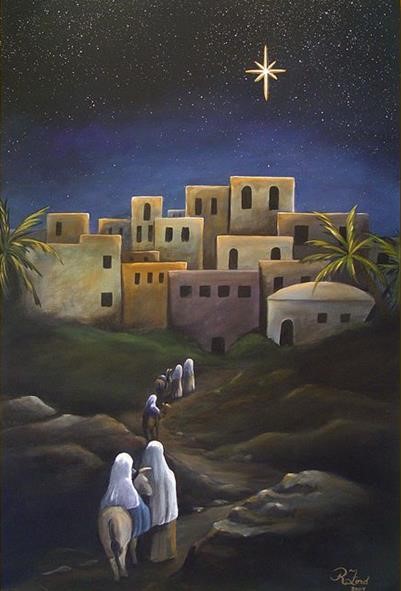
I wrote a blog post about the O Antiphons in 2019, and I loved picking out the image to illustrate each one. So I have decided to post on the O Antiphons again, in order to highlight additional images and to explore the scriptural roots of the meaningful word images. If you aren’t familiar with the O Antiphons or need a refresher, please check out my 2019 blog post here.
Today is the final seventh O Antiphon out of the last seven days before Christmas, in this very late day of Advent intensification.
Hopefully by now you are somewhat more balanced and in your final approach to Christmas. Maybe you only have wrapping left to do or maybe you are baking cookies or making a final grocery store run. So, if you are still feeling rushed, remember that reciting the words of the O Antiphon for each day takes less than a minute. You can easily include them before and after grace at dinner or as part of your advent wreath tradition. And if you take just another less than a minute to light a candle or your advent wreath beforehand, I promise the O Antiphons are breathtaking by candlelight!
You can find my blog post on the O Rex Gentium antiphon from yesterday here.
O Emmanuel – Antiphon for December 23
O Emmanuel, our Ruler and Lawgiver, the desire of all nations and their salvation: come and save us, O Lord our God.
O Emmanuel, Rex et legifer noster, exspectatio gentium, et Salvator earum: veni ad salvandum nos Domine Deus noster.
O Emmanuel:
Again the Lord spoke to Ahaz, “Ask for a sign from the Lord your God; let it be deep as the nether world or high in the sky!” But Ahaz answered, “I will not tempt he Lord!” Then he said, “Listen O House of David! Is it not enough for you to weary the people, must you also weary my God? Therefore, the Lord himself will give you this sign: the virgin shall be with child, and bear a son, and shall name him Immanuel.” (Isaiah 7:10-14)

These verses from Isaiah, announcing the coming of Emmanuel, taken together with the prophecy contained in Micah 5:1 below, remind us that the Messiah was to be born to the house of David in Bethlehem.
But you Bethlehem-Ephrathah, too small to be among the class of Judah, from you shall come forth for me one who is to be ruler in Israel, whose origin is from old, from ancient times. (Micah 5:1)
This seventh and final O Antiphon comes on December 23, the night before the Christmas vigil. It is an antiphon to Christ Emmanuel, which means God is with us. Since the nativity is not yet fully upon us, I have chosen art images of Bethlehem, the city that waits for Emmanuel, rather than the nativities that will be coming tomorrow. Imagine the scene of Mary and Joseph, who are road-worn and tired, but not quite at Bethlehem, as they keep going on, growing ever closer to the birth of Jesus.
O Emmanuel is the most personal and intimate of the Messianic titles for Jesus, since it is the O Antiphon that is closest to us as humans. Benedictine Brother Jerome writes that Emmanuel reflects an entirely new and Christian theology, one of Incarnation and an immanence not previously known. In the Old Testament, the Israelites held a sort of distant regard for their Divine Patron Yahweh. But here, God is now to be with us, sharing every joy and hardship of humans, and dwelling, “not in a Temple spiritually, but as flesh and blood among humanity, wishing to remain with us until the end of time.”
Jesus would empty Himself to be born into the world, in order to forever bridge the gap between us and God. He was a radical fulfillment of the Messianic prophecies that the Jewish people never expected. They were looking for an earthly messiah, reasoning that humans could not be literally divine. In accordance with the Messianc title of Emmanuel, Jesus will be brought into life as a human – a soft, vulnerable baby. Fully divine, fully human, the coming of Jesus is the culmination of our waiting for the one who is the desire of all and who brings us to salvation.
Our Ruler and Lawgiver, the desire of all nations and their salvation:
In the coming of Emmanuel as Ruler and Lawgiver, we can see the contrast between God in the Old and New Testaments. In the Old Testament, God is the law and commandments that were carved into solid, unyielding stone and were carried around in the Ark of the Covenant. On the other hand, God in the New Testament brings the laws of the New Covenant, through the divine, incarnate baby Jesus, who was carried around, enfolded in the soft arms of Mary.

Ives Digory discusses the O Antiphons as a progression, a “cosmic descent,” bringing us from the Divine Creator of the O Wisdom Antiphon ever closer to the birth of Jesus of the O Emmanuel Antiphon. Meditating on the O Antiphons can “move us liturgically from the point of highest transcendence to the point of closest immanence, from Cosmic Christ to Infant Christ.” Below is Ives’ complete Christology of the O Antiphons:
- O Sapientia tells us Christ was begotten of God as Wisdom and participated in the creation of the world.
- O Adonai tells us Christ is the God of Israel and the Old Testament scriptures, appearing to Moses and giving the Law.
- O Radix Jesse tells us Christ is a human messiah of the Davidic line, founding a paradisal kingdom that will overwhelm the world.
- O Clavis David tells us Christ has received authority over all things in heaven and earth, and he has used this authority to free the captives of death.
- O Oriens tells us Christ is the divine light ascending over the earth, a sign of the hope of salvation.
- O Rex Gentium tells us Christ is the ruler who unites all of humankind, transfiguring us into a new human race.
- O Emmanuel tells us this Christ is here with us, bringing salvation.
Come and save us, O Lord our God.
This final O Antiphon of Advent points toward the fulfillment of God’s Advent promise that salvation is actually coming to pass, even in our bleak and troubled world. You can’t be more succinct than this final Advent cry: Emmanuel come and save us, O Lord our God! The Latin word salva is related to salus, which means health or wholeness. Here, when we ask to be saved, it means that we ask for holistic wellbeing – for healing of body, mind, heart, and soul. That resonates with me so much.
Also, in this O Emmanuel antiphon, we finally identify Jesus directly as our Lord and our God. It is the crowning acclamation of faith at the climax of the O Antiphon octave. Christ is the divine and ordered Wisdom, the unconsumed burning bush, the branch growing out of rootedness, the key to a prison door, the rays of rising dawn, the wise ruler of the peoples, and the birth of a child named God is with us. Let us not miss the contrast of complexity/simplicity that pertains to Jesus, as a manifestation of all of these names, and he comes to us as ruler and lawgiver, as savior, and as the Incarnate Emmanuel.
The highly anticipated time for Emmanuel, God is with us, is here, is new life, coming into the world!
Below is a link to a video I found that was made to accompany an a capella version of the song O Come, O Come Emmanuel. This familiar tune steps through each O Antiphon that we have marked/recited/chanted this week.
As a reminder, there are a couple of options if you are interested in hearing the O Antiphons chanted in Latin. First, if you click here you will go to the Traditional Catholic Living website (Reference 4) that has a link to each O Antiphon, with the words and music so that you can follow and chant along. You can also find the chants here at an LDS blogpost (Reference 5.) I like this link, because it includes the entire vespers sequence. Each O Antiphon is chanted, followed by the Magnificat, finishing with the O Antiphon chanted again.
In my opinion, listening to the Gregorian chanting by candlelight is the best way to experience the O Antiphons!
Readings: The New American Bible, Confraternity of Christian Doctrine, Washington DC, 1970.
Reference 1: Malcolm Guite, “O Emmanuel; a Final Antiphon and More Music,” blog post, December 23, 2021.
Reference 2: Ives Digory, O Emmanuel: Meditations on the O Antiphons, blog post at Sanctum in Heremis website, December 19, 2015.
Reference 3: O Emmanuel, Mount Saint Mary’s Cistercian Abbey, Wrentham, MA, December 23, 2018.
Reference 4: Sing the O Antiphons Gregorian Chant, Traditional Catholic Living website, http://www.traditionalcatholicliving.com/o-antiphons-advent/.
Reference 5: Awaiting the Coming Messiah: The “O Antiphons,” LDS Seasonal Materials, http://huntsmanseasonal.blogspot.com/2013/12/awaiting-coming-messiah-o-anitiphons.html.
Image 1: Bethlehem New Light, Michael Torevell, used with permission.
Image 2: O Little Town of Bethlehem, Carol Cantrell, used with permission.
Image 3: Journey to Bethlehem, Rita C. Ford, used with permission.















1 Comment
Leave your reply.